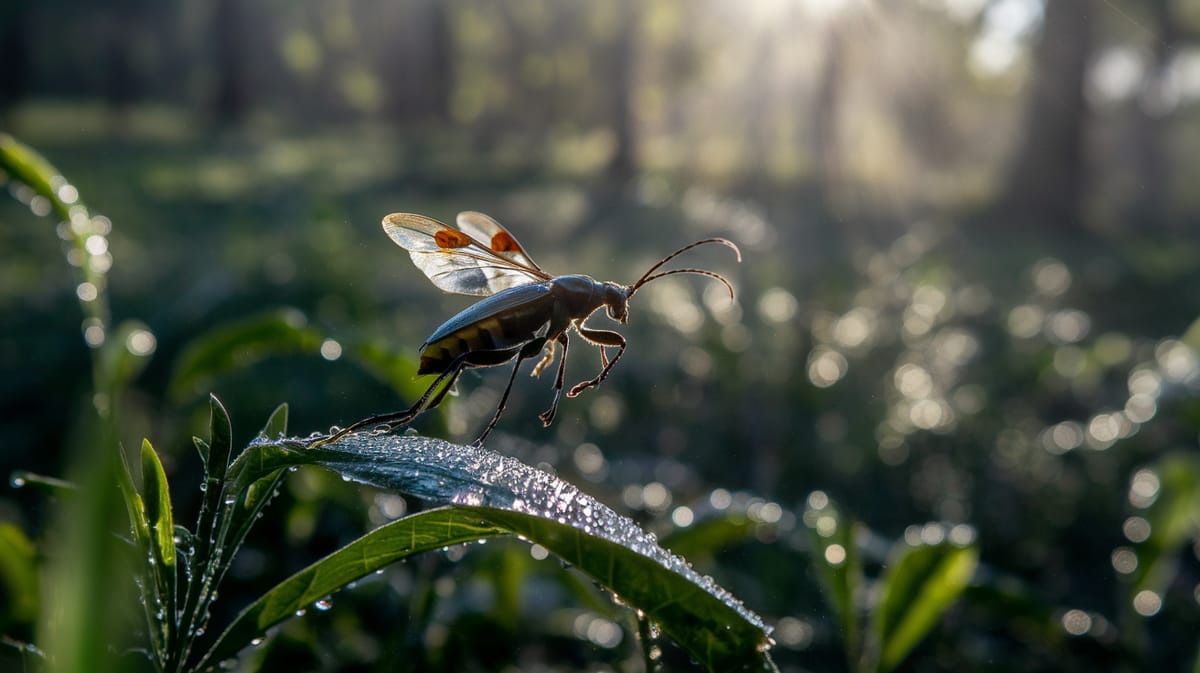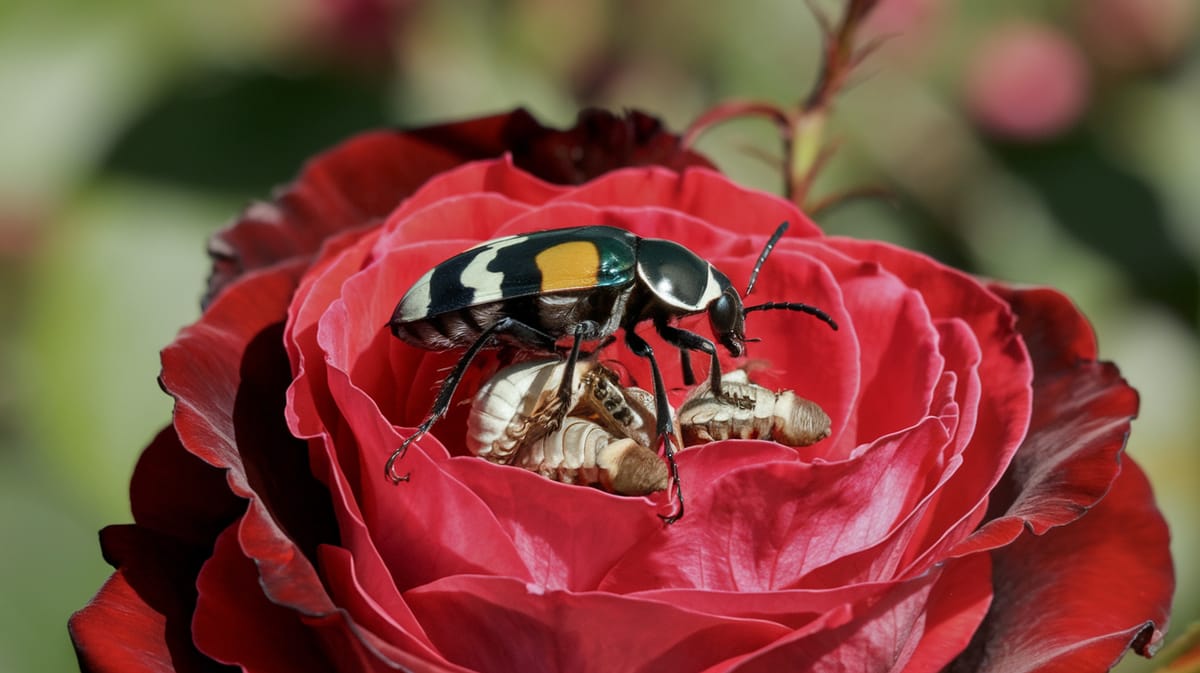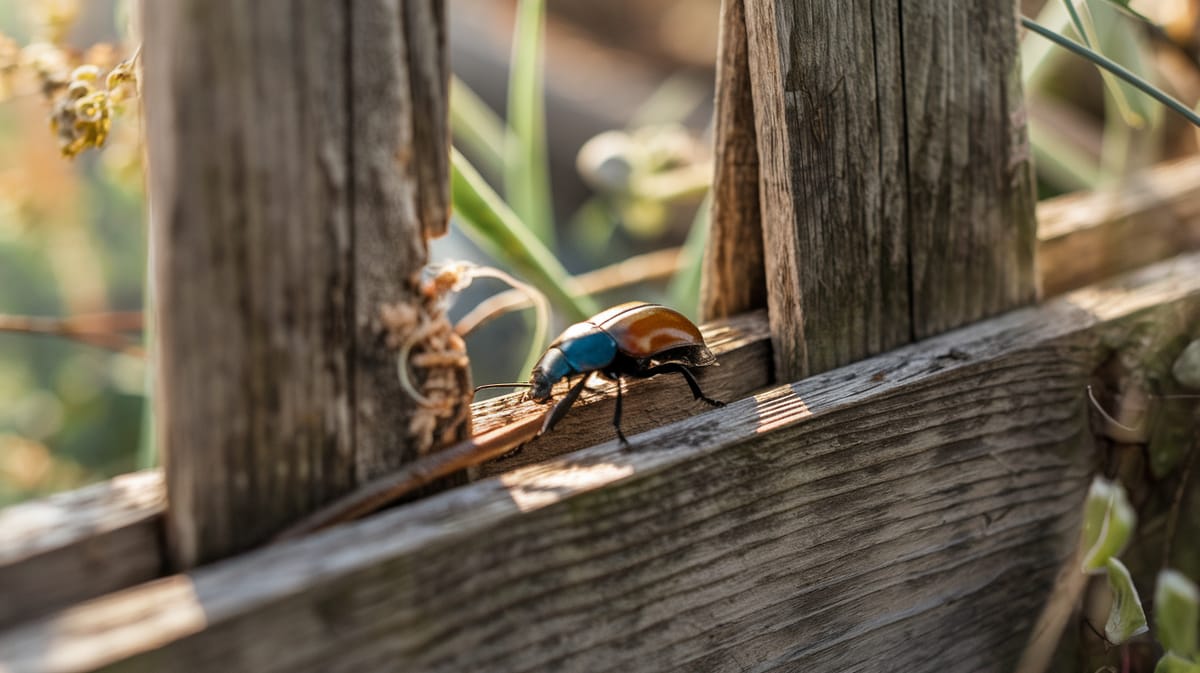Asian Lady Beetle
Bright and bold, the Asian Lady Beetle is a voracious aphid predator with an impressive adaptability to various environments. Its presence is vital for controlling pest populations.

Key Insights at a Glance
Did You Know?
Taxonomy & Classification
The Asian Lady Beetle is a voracious aphid predator, distinguished by its adaptive coloration and resilience across diverse climates. Let's understand the evolutionary journey and classification of these remarkable predators.
Global Spread
Native to Asia, this beetle has spread globally, thriving in diverse environments due to its adaptability and predatory efficiency.
Evolutionary Adaptation
Originating in Eastern Asia, the beetle's ability to overwinter and resist harsh climates has ensured its survival through environmental changes.
Lifecycle and Growth
A remarkable journey of transformation from Egg to Adult.
Egg
Female lady beetles lay clusters of dozens of bright yellow eggs on leaves, setting the stage for the next generation.
Larva
Emerging larvae resemble tiny alligators, voraciously consuming aphids and growing rapidly through several molts.
Pupa
Within the pupal case, the larva transforms dramatically, reorganizing into the familiar adult beetle form.
Adult
Newly emerged adults develop their distinctive spots and hardened wings as they begin their role in the ecosystem.
Dietary Habits
A voracious predator with notable adaptability, it primarily consumes aphids and scales while occasionally feeding on pollen and nectar.
| DIET TYPE | DESCRIPTION |
|---|---|
| Primary Diet | Preys mainly on soft-bodied insects like aphids, scales, and mites, which it hunts with efficiency. |
| Secondary Diet | Consumes a variety of soft fruits and plant material, especially when prey is scarce. |
| Occasional | Occasionally feeds on nectar and pollen, particularly during times when insect prey is limited. |

Behaviour and Adaptations
Discover the fascinating traits that make the Asian Lady Beetle a survival expert.
Chemical Defense
Releases a foul-smelling fluid when threatened to deter predators.
Overwintering Strategy
Aggregates in large numbers in warm locations to survive winter months.
Voracious Appetite
Consumes vast quantities of aphids, aiding in pest control.
Ecosystem Impact
Exploring the Asian Lady Beetle's role in ecological balance and sustainability.
Natural Pest Control
Consumes aphids and other pests, reducing the need for chemical pesticides.
Food Chain Link
Serves as prey for birds and other wildlife, supporting biodiversity.
Pollination Assistant
Occasionally aids in pollination, contributing to plant reproduction and diversity.
Conservation Challenges
Addressing the major threats to Asian Lady Beetle populations.
Chemical Exposure
Pesticides disrupt beetle's role in pest control, harming ecosystems.
Habitat Competition
Competing species threaten native beetle populations and ecological balance.
Climate Change
Shifting climates alter habitats, affecting beetle survival.
Frequently Asked Questions
How long do Asian Lady Beetle live?
Asian Lady Beetles typically live for one to two years. Their lifespan can vary based on environmental conditions and availability of food. Most of their adult life is spent in hibernation during the winter months, emerging in spring to reproduce.
What do Asian Lady Beetle eat?
Asian Lady Beetles primarily eat aphids, but they also consume other soft-bodied insects, helping to control pest populations in gardens and crops. They are considered beneficial for their role in natural pest management. They may also feed on pollen and nectar when prey is scarce.
Are Asian Lady Beetle poisonous?
Asian Lady Beetles are not poisonous, but they can secrete a yellow fluid from their legs when threatened. This fluid has a foul odor and can cause minor irritation to the skin or eyes in some people or pets.
Are Asian Lady Beetle endangered?
Asian Lady Beetles are not endangered. They are widespread and have been introduced to many regions as a biological control agent. Their populations are stable, and they are commonly found in agricultural and urban areas.
What do Asian Lady Beetle symbolize?
Asian Lady Beetles often symbolize good luck, prosperity, and protection in various cultures. They are also seen as a sign of a healthy garden due to their role in controlling pests, making them a positive presence in agriculture and horticulture.
Do Asian Lady Beetle bite?
Yes, Asian Lady Beetles can bite, but their bites are generally harmless and do not break the skin. The bites are more of a nuisance, causing mild discomfort or irritation. They are not aggressive and usually bite only when seeking moisture or food.
What color are Asian Lady Beetle?
Asian Lady Beetles vary in color from orange to red and can have many black spots or none at all. Their color and pattern diversity can sometimes lead to confusion with other ladybug species. They typically have a distinctive "M" or "W" marking on their pronotum.
Does a Asian Lady Beetle have wings?
Yes, Asian Lady Beetles have wings. Like other beetles, they have two sets: a hard outer pair called elytra that protects their delicate flight wings underneath. They use these wings to fly, aiding in their search for food and new habitats.
What does a Asian Lady Beetle look like?
Asian Lady Beetles are small, oval-shaped insects with a dome-like appearance. They have a glossy, smooth shell that can range in color. They feature a distinctive white marking on their head that resembles an "M" or "W." Their size is about 7 to 10 millimeters long.
Is a Asian Lady Beetle an insect?
Yes, the Asian Lady Beetle is an insect. It belongs to the beetle family Coccinellidae. Like all insects, they have six legs, a segmented body, and two antennae. They are part of the order Coleoptera, which is characterized by their hardened forewings.
Related Insects
Discover insects with similar characteristics to Asian Lady Beetle - including shared habitats, diets, and taxonomic classifications
Share this profile
Help others discover Asian Lady Beetle
